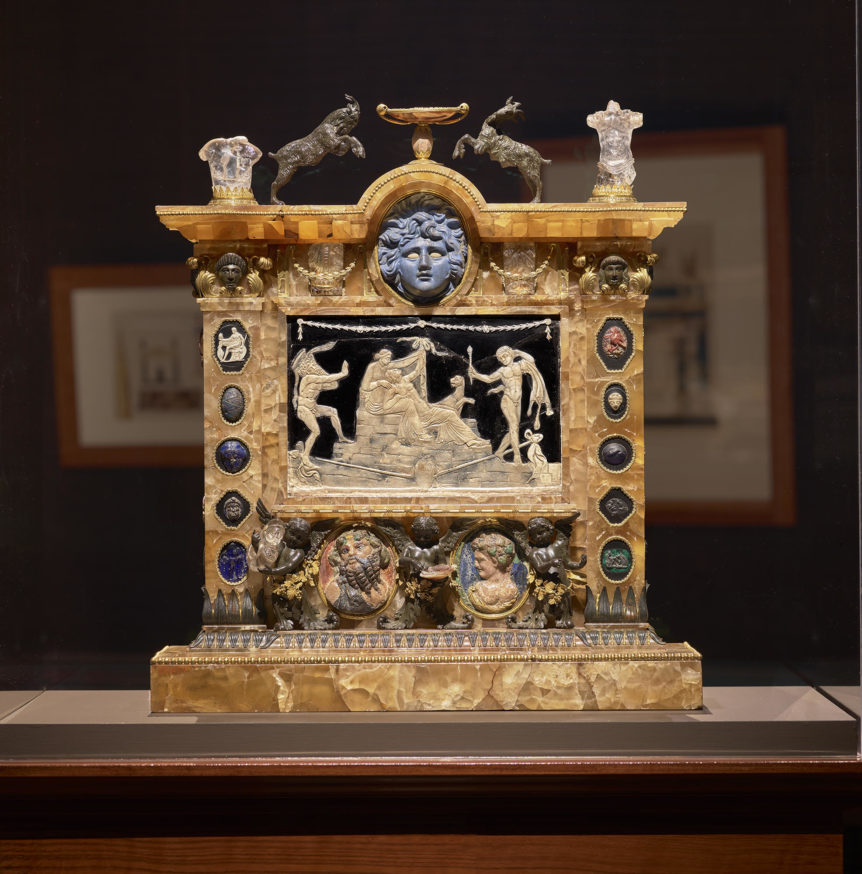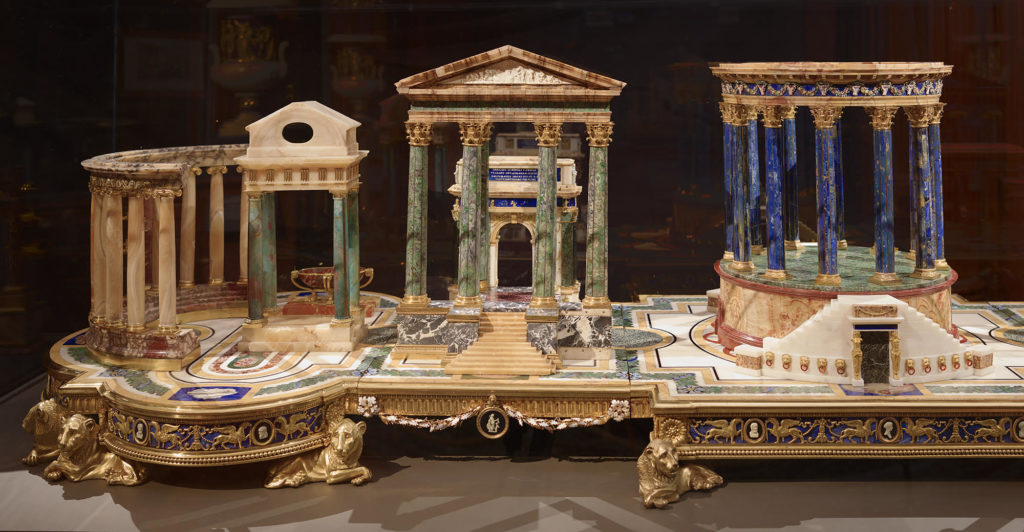
Installation view of Luigi Valadier’s Deser for Jacques-Laure Le Tonnelier, Bailli de Breteuil (detail), ca. 1778, gilt bronze, enamel, colored marbles, amber, lapis lazuli, amethyst, garnets, ivory, and agate. Patrimonio Nacional, Palacio Real, Madrid and Museo Arqueológico Nacional, Madrid; all images Michael Bodycomb photo.
If there is one must-see design object in New York right now—one rarely shown, brilliantly designed, and exquisitely crafted object—it’s Luigi Valadier’s Madrid “deser,” or dining table centerpiece, from 1778. Valadier (1726-1785) was Rome’s premiere designer of the day, working in silver, gold, stone of many types and colors, and bronze. This massive centerpiece is one of his—or anyone’s—most remarkable achievements in the decorative arts, and it can be viewed at the Frick Collection, which is giving Valadier his first retrospective. The show is dramatic and revelatory. How could so fine an artist be so little known? It took the Frick, which does this kind of show to perfection, to tell his story.
Valadier was a product of a mass movement of French design talent across Europe in the late 17th century. His Provençal father, from an artisan family, was working in Rome as a silversmith when Valadier was born. He was an early success, providing goods of the highest quality and the brightest creative spark for the Borghese and Chigi families, the papal court, and the deposed Stuart royals in Rome, among many others. Grand Tourists bought his work, too. Piranesi was more famous—his art was mass produced and highly portable—but Valadier was his peer.
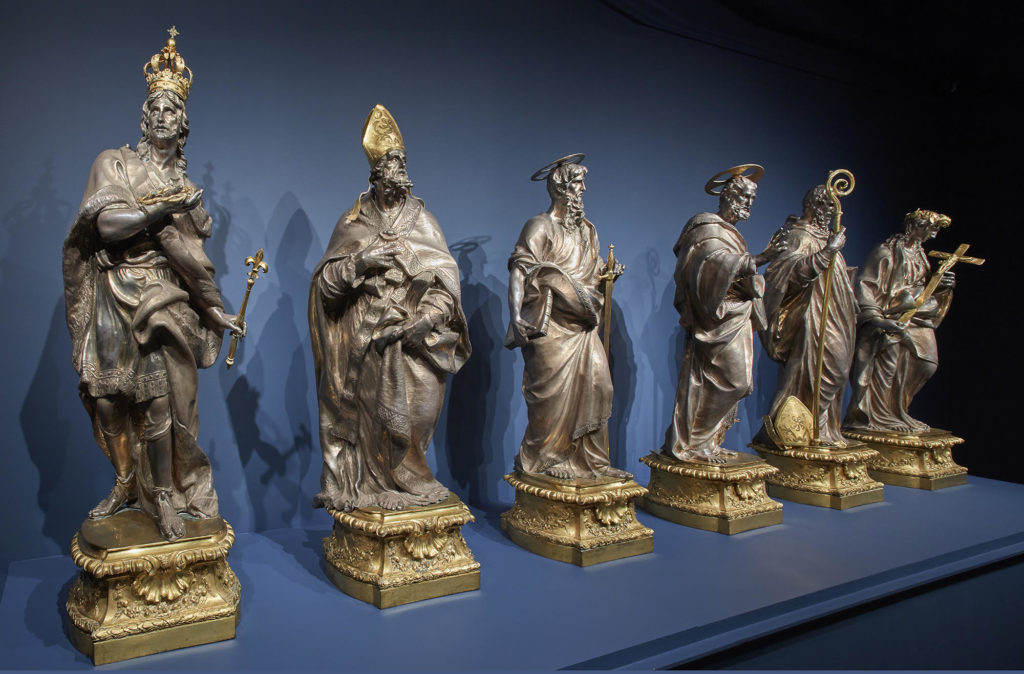
Left wall of North Room (lower exhibition galleries) featuring the exhibition Luigi Valadier: Splendor in Eighteenth-Century Rome. This view shows the statues of six saints (St. Louis, St. Castrense, St. Paul, St. Peter, St. Benedict, and St. Rosalia) from the High Altar of the Cathedral of Santa Maria la Nuova, Montreale, ca. 1773, silver and gilt metals.
Valadier’s silver Borghese service from 1783 is at times light, fanciful, even breezy as Rococo style demands but I quickly put aside categories. For all its whimsy and delicacy, it has weight and sculptural gravity, too. Valadier’s work never flirts or teases. A gust of Bernini’s spirit blows over it. Valadier was, after all, surrounded by Roman ruins and Baroque buildings. With Valadier, navigating rules, styles, and schools is useless, even boring. It’s best to accept him as a polymath, a unique genius, both of his time and soaring above and beyond it. Stretching across centuries, Rome itself washes such questions away through sheer majesty and aesthetics best described as omnivorous.
A deser remained on the table as the various services came and went. It’s a mammoth embellishment composed of candlesticks, various ornaments, small sculptures, and stands set on a plateau. The Madrid deser was a combination of hard and soft polychromatic stone with gilded silver, bronze, and gold decoration and sumptuous jasper, ivory, agate, and lapis lazuli inlay. Micromosaics abound. Valadier had already supplied a deser to Russia’s Catherine the Great. When he retired as Malta’s ambassador to Rome in 1778, Jacques-Laure Breteuil wanted a grander one for himself. It’s a dictionary of ancient architecture from many places in Italy starting with the Circus Maximus as a plateau. Each element is a mini-masterpiece, the whole a symphony of color, texture, and sheen. It lives in Spain now, divided between the Royal Palace and the Archaeological Museum and reunited in the show.
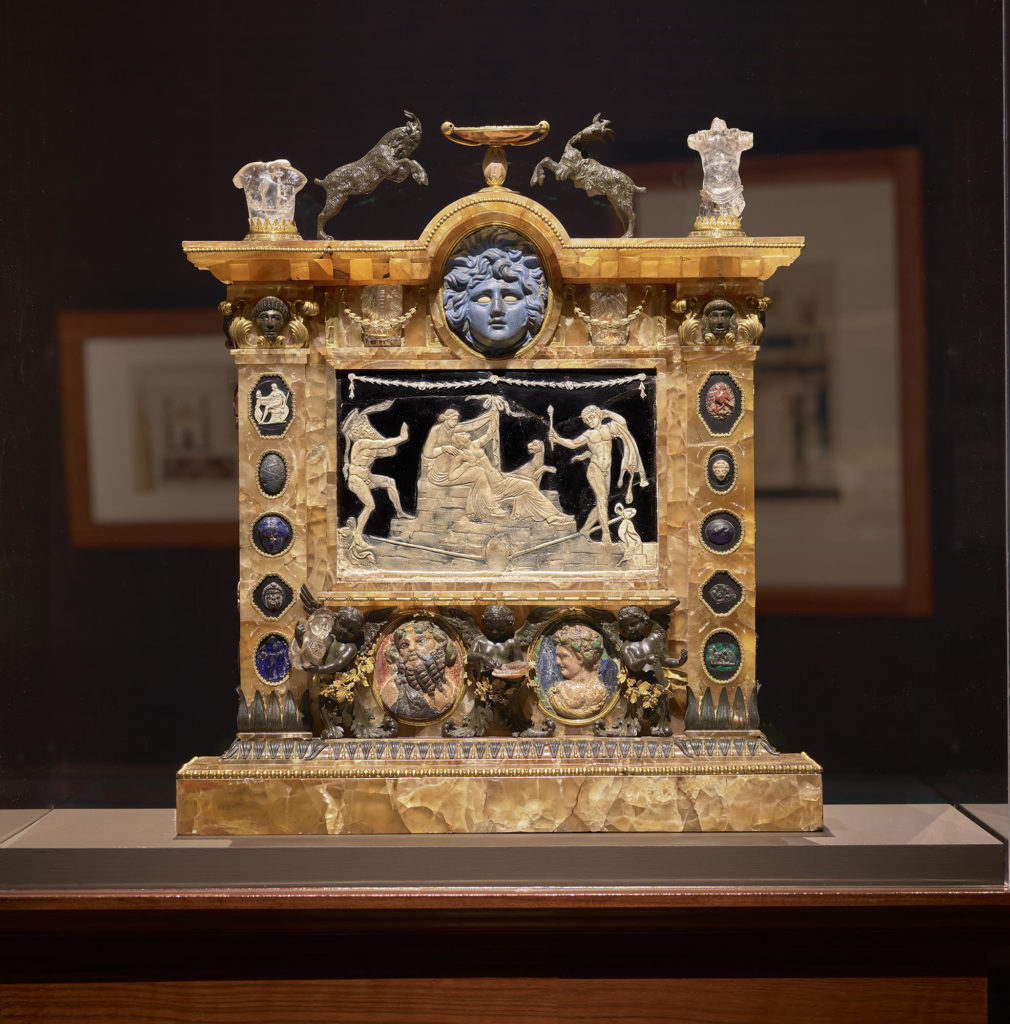
Installation view of Luigi Valadier’s Bacchus and Ariadne, 1780-85, Alabastro d’Orta, bronze, and gilt bronze, ancient intaglios and cameos, crystal, ancient glass paste, sculpted fragments. Musée du Louvre, Paris.
Valadier’s business was huge. His shop produced vases, chimney pieces, candlesticks, clock surrounds, furniture, cameos and their mounts, and many other luxury pieces. His craftsman achieved the very best casting. With the Madrid deser, the great triumph of the show is the collection of six prodigious bronze and silver saints from the Cathedral of Santa Maria la Nuovo in Monreale in Sicily. Valadier designed the entire high altar. These have never left Monreale.
Valadier was the entrepreneur, chief designer, quality controller, and marketer. As sometimes happens with creative geniuses, he became overwhelmed by debt and the shame he felt with each creditor’s disappointment. Though a master, he always sought new heights of perfection. He snapped under the strain and died a suicide.
An important part of the show and catalogue is archival discovery. This is old school digging and connoisseurship most art historians are too lazy or clueless to do. Much of Valadier’s silver, for instance, was melted but records and beautiful drawings fill the gaps.
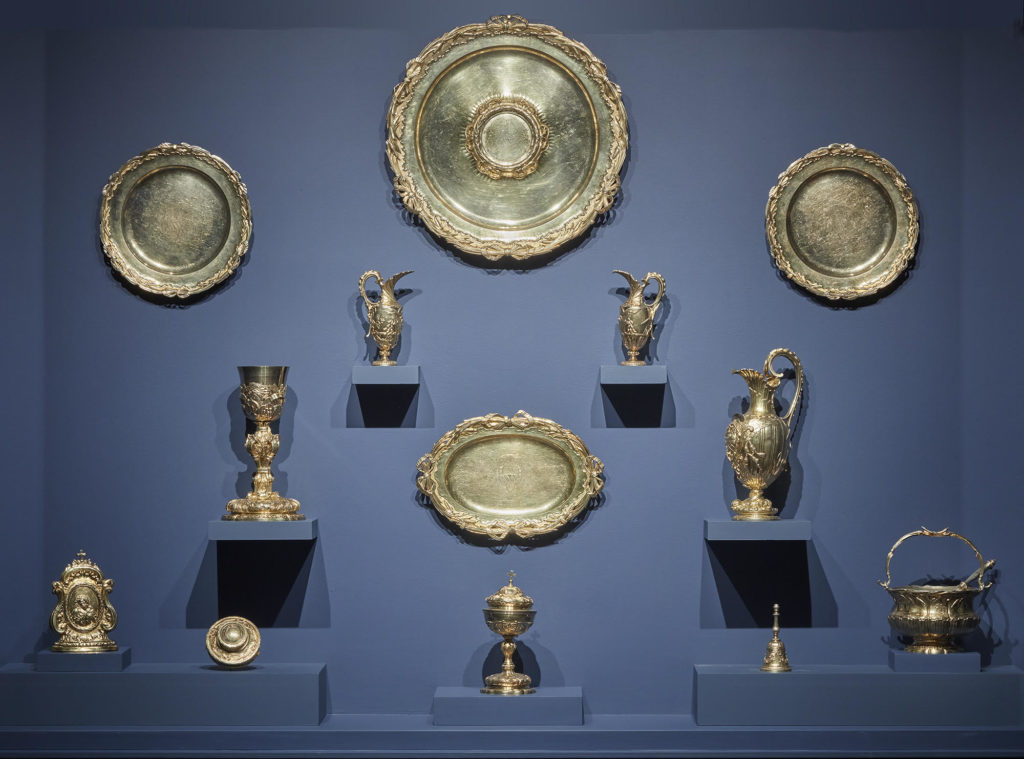
Luigi Valadier’s Cardinal Orsini Mass Service, ca. 1768, gilt silver. Capitolo Concattedrale, Muro Lucano.
This is the fourth superb show in a row I’ve seen at the Frick, if we count the lovely French faience show from the Sidney R. Knafel collection. It’s an expansive display of the zenith in this medium. These are serious, sumptuous shows. They cover focused topics with, as I’ve said, perfection. Some of the Frick’s very small shows, like its treasures show from the Dulwich Picture Gallery, with six or seven very loosely related things, are not really shows but events or happenings. They didn’t have intellectual themes, as pretty as they were. The Valadier show has it all: great art, a serious point, thorough explication, and a gorgeous, must-read catalogue. The book and the gallery interpretation are sometimes both conversational and piquant, which make them even more enjoyable.

